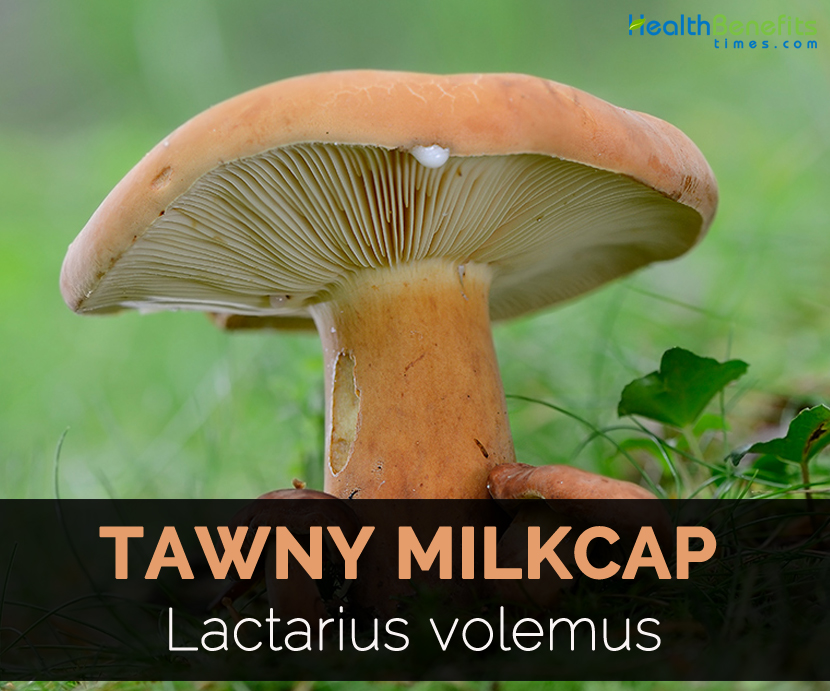
Facts About Tawny Milkcap
| Name | Tawny Milkcap |
|---|---|
| Scientific Name | Lactarius volemus |
| Name in Other Languages | Spanish: Lactario anaranjado, Esnato, Lechera, esnato, lactario anaranjado, Llaterola roja, Lleterola roja; Catalan–Valencian: Lleterolas, Lleterola blanca; German: Milchbrätling; Basque: Esnato, Basque Urritz perretxiko |
| Size | Diameter of 5 to 11 cm (2–4 ½ in) |
| Color | Apricot to tawny |
| Stem | 4 and 12 cm (1 ½ and 5 in) high and 1 and 1.5 cm (0.4 and 0.6 in) thick |
| Gills | Adnate to slightly decurrent, brittle, narrow |
| Spores | Spherical, 7–8 micrometres in diameter |
| Flesh | White and firm |
| Spore deposit | Whitish |
| Spores | 6–11 × 6.5–9 μm, globose to subglobose |
| Cap | 11 cm wide |
| Taste | Mild delicious |
| Fruit Season | Summer-fall |
Description
Fruit body has fleshy and firm cap with velvety or smooth surface and the shape changes with maturity. It has typical diameter of 5 to 11 cm (2–4 ½ in), its colour ranges from apricot to tawny. The color of the cap varies in North American, European and Asian specimens. The height of the stem varies between 4 and 12 cm (1 ½ and 5 in) and has lighter coloration than cap. Gills are adnate to slightly decurrent, narrow, brittle, quite closely spaced and sometimes forked. When bruised, a pale golden yellow color turns brown.
Cap
Cap is fleshy and firm, 4-15 cm, initially convex, then flat-convex, finally depressed at the center, cyathiform. Cuticle is not detachable, irregularly wrinkled, velvety, dry, opaque, cracked with dry weather towards the margin.
Gills
Gills are attached to the stem or running slightly down. It is creamy white and discoloring to brown when injured.
Stem
Stems are normally cylindroid, 5-3 cm but are swollen or tapered at the base. The extension of the gills and concolor to the cap but paler and discoloring dark brown when touched.
Flesh
Flesh is compact, firm, thick at center of the cap, cream-white staining slowly brown in the cap and in the bark of the stem.
Latex
Latex is abundant, viscous, white then dirty cream with mild taste.
Culinary uses
- The mushroom is used in thick sauces and casseroles.
- It is preserved in salt. Soak it in cold water overnight before used.
- Tawny milkcaps are used in mushroom salads, soups, sauces, pastries and meat loaf or as toppings for pizza.
- Add it to foods after boiling.
References:
https://species.nbnatlas.org/species/NBNSYS0000038431
https://www.fs.fed.us/nrs/pubs/gtr/gtr_nrs79.pdf
https://gyaanipedia.fandom.com/wiki/Lactifluus_volemus
https://www.arktisetaromit.fi/en/mushrooms/wild%20mushrooms/northern%20milkcap/
Comments
comments